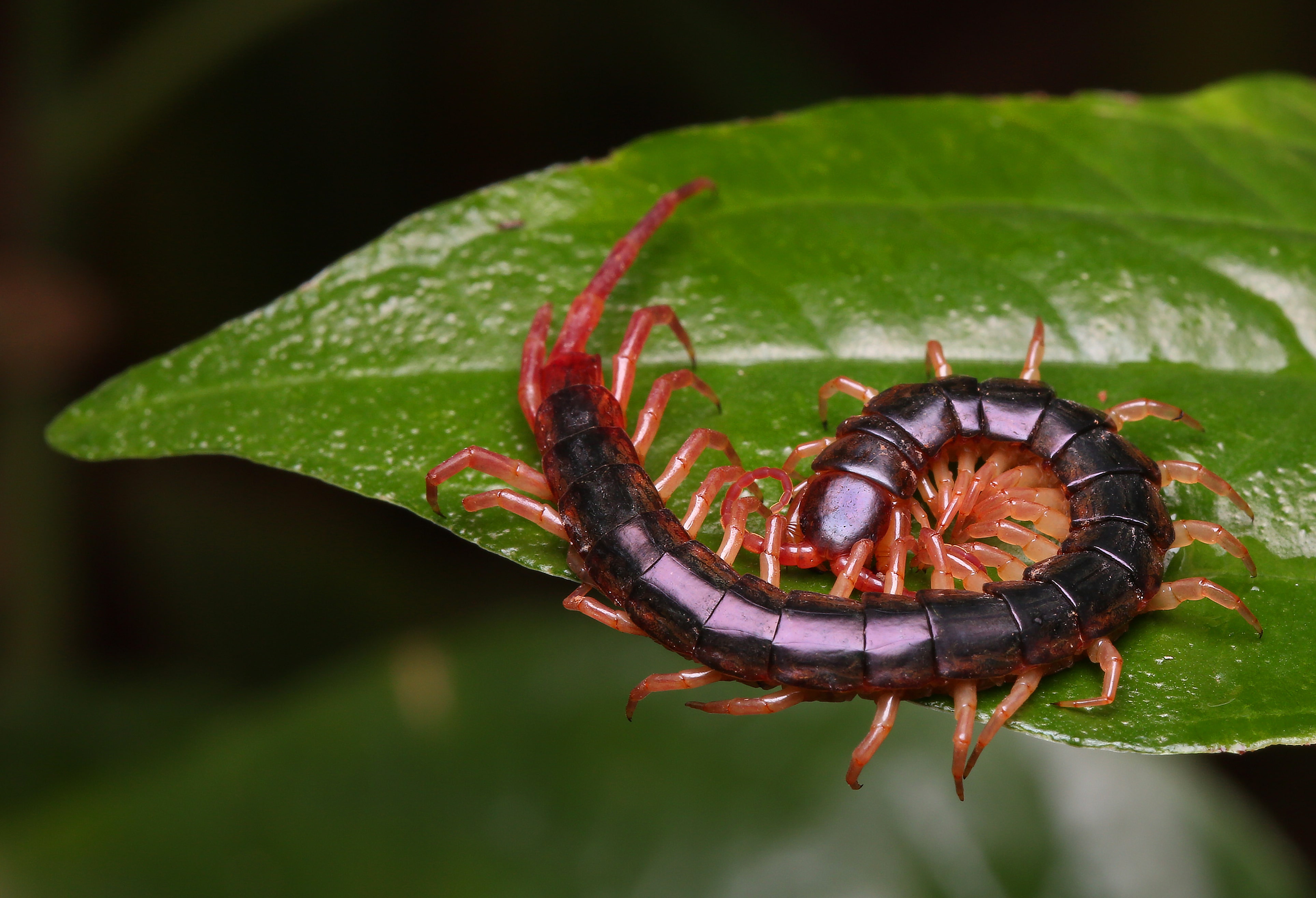If you've ever seen a centipede in your home, you may have wondered why it’s there. Although not terribly common, these insects are capable of finding their way inside houses. Centipedes are known for their multiple sets of long legs and their characteristic alien-like appearance. There are several factors, including their diet that can lure them inside your house.

Contrary to what you might expect, centipedes are carnivores; they don’t feed on plant matter and prefer to dine on other insects. Centipedes are also nocturnal. They hide during the day and emerge at night to hunt. Some species subdue their prey by injecting venom through modified front legs.
The following insects are common prey for centipedes:
- Silverfish
- Cockroaches
- Spiders
- Firebrats
- Crickets
- Moths
Centipedes can be predators, but they can also be prey. These animals may feed on centipedes:
- Birds
- Spiders
- Snakes
- Lizards
- Toads
- Shrews
Centipedes vs. Millipedes
Centipedes are commonly confused with another multi-legged pest: millipedes. There are a few key differentiators:
- Legs – Centipedes have one pair of legs per body segment and average about 30 legs per insect. Millipedes, on the other hand, have two pairs of legs per body segment and average fewer than 100 legs per insect. Centipedes have longer legs than millipedes and can move faster.
- Body shape – Both of these insects have elongated bodies, but centipedes are flattened, while millipedes are cylindrical in shape.
- Antennae – Centipedes have long antennae, while millipedes have shorter, less visible antennae.
In general, most species of centipedes measure up to two inches in length. However, some species in Texas and the Southwest can reach six inches or longer. Centipedes are commonly found in moist, dark places outdoors. Common hiding spots are under rocks, in mulch or under wood piles.
Do They Bite?
While many people believe that centipedes can bite, they actually pinch. If they are not hunting, this behavior is a defense mechanism. Fortunately, they are relatively harmless to humans. However, they may cause an allergic reaction in some people. Signs of a centipede pinch include:
- Pain
- Redness
- Swelling
- Lymph node swelling (rare)
- Numbness (rare)
- The following signs may indicate an allergic reaction to centipede venom:
- Trouble breathing
- Rapid heart rate
- Throat swelling
What Attracts Them?
In homes, centipedes are most likely to be found in areas where their prey – other insects – are common. These places include damp areas like bathrooms, closets and basements, although they may also be seen around baseboards, doorways and windows.
Food, moisture and shelter are the main attractants for insects. Obviously, if your home has an existing pest problem, you’re at higher risk for finding centipedes. They may wander inside during the night as they search for food. So, if you’re seeing centipedes in your home, you may have a bigger pest issue on your hands.
The House Centipede
While finding centipedes in your house is a relatively rare occurrence, there is one species that’s more likely than most to be seen inside: the house centipede. Its appearance is quite alarming, but it is generally harmless.
These centipedes are found across the United States and can be found both inside and outside. They measure about 1 ½ inches in length and are grayish brown in color. They are usually found in basements, damp closets, crawl spaces and bathrooms. If they are seen frequently, they may indicate a more serious pest problem.
Tips for Prevention
You can help keep centipedes away from your home by sealing cracks and holes around the building’s exterior to keep the insects from entering. Additionally, keeping vegetation, like shrubs and ivy, trimmed away from your home can help cut off access and limit the centipedes’ food supply. Be mindful of additional hiding spaces for centipedes, such as boards, cardboard, boxes, compost, leaf piles and wood piles, and remove them from your yard. You should also take steps to improve ventilation in crawl spaces or basements with humidity issues.
If you notice an issue with centipedes in your home, it’s wise to contact a pest control professional. These professionals can pinpoint issues in crawl spaces and basements, and they can also help identify other pests that may be attracting centipedes. Terminix® offers pest control plans designed to help remove these pests from your house. Get your free estimate today.


